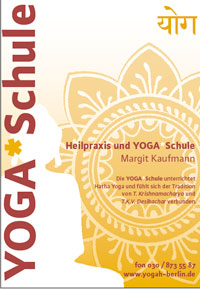Drishti´ is a Sanskrit word that has several levels of meaning. Most simply, it can be translated into English as ´the gaze´. In Asana practice, your Drishti is the place where your eyes rest- looking forward over your middle finger in Warrior II, for example, or to the navel in Downward Dog. In this sense, Drishti is a very tangible and useful anatomical tool. Where your gaze rests is a pretty good indicator of the line your neck and spine are following.
Often yoga teachers will remind you of your Drishti point during classes so that you can self-correct your pose. Sometimes teachers will also ask you to direct your gaze into your body, or bring your Drishti point inside. Traditionally, Drishtis are external, but the concept behind an internal focus point is just the same- it helps you to quiet the mind, increases concentration and relaxation, and allows your attention to flow into whatever you are focusing it on.
Each Asana has a Dristhi point. All in all, there are 9: both thumbs, the tip of the nose, the palms of the hands, to the sky, to the left and right side, the navel, the toes and the middle of the eyebrows. Practicing a variety of Drishtis helps to strengthen the muscles and nerves around the eyes, as well as providing a point of focus and concentration in each posture. Dristhi is associated with the fifth limb of yoga, Pratyahara, which concerns the use of the senses. Drishti can be practiced meditatively as a way of literally ´seeing what is right in front of you´ and focusing the senses on reality and away from illusions and neuroses.
One of our main goals in our Berlin yoga classes is to educate people about the benefits of our practice. We believe that by making yourself more centered and focused you are better equipped to make an impact in the world around you. For more info about our Hatha Yoga in Berlin or Vinyasa Yoga, check out our yoga in English schedule.















